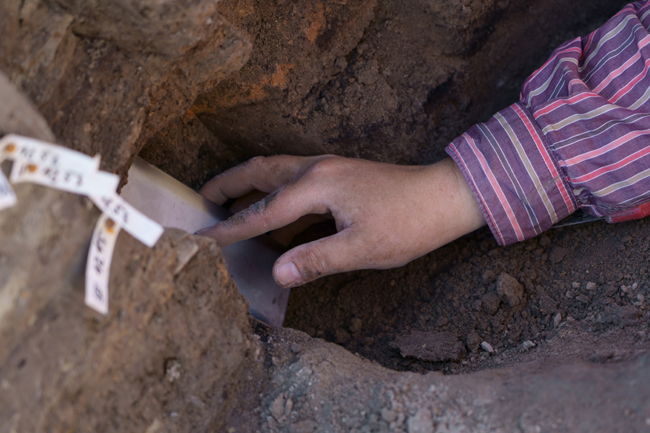The remains of a dozen archaeological periods have been identified at the site of the former Óbuda Buszesz distillery. The scientific analysis of the freshly unearthed remains of a house gives us an insight into previously unknown dimensions of Bronze Age life. Report by the excavation’s lead archaeologist, Gábor Szilas.

A sensational find came to light during the rescue excavation on the site of the former Buda distillery (Buszesz). We unearthed the remains – in relatively sound condition – of a building, which stood in a settlement established by people belonging to the so-called Vatya culture (c. 1700-1500 BC) during the Middle Bronze Age.
What makes this find special is that in the case of the known Bronze Age buildings with ascending walls and a post structure – primarily due to later disturbance from, for instance, agricultural activities – for the most part we can only find the postholes dug in the ground for the beams that held the roof. Here, however, most fortunately, compressed in a roughly forty-centimetre-thick layer above the postholes, not only the houses’ floor, the remains of hearths and furnishings, but even the debris from the side walls and the roof, too, were preserved. From the period, until now, such observations could only be made at the culture’s central, fortified, multi-layered, so-called tell-settlements. We know very little about the architecture of the so-called flat settlements.


The houses uncovered on the Buszesz site were repeatedly rebuilt and could have been 10-12 m long and 5-6 m wide. Their rammed-daubed floors were renewed in many cases, and we found the remains of their entrances, as well as the remains of hearths, ovens and contemporary utensils e.g. vessels and bone tools. North of the house, we discovered a find-free zone identified as communal space. In the other directions, however, the traces of further houses came to light. This leads us to surmise that this settlement by the Danube was relatively densely built.

During the excavation, we collected a large amount of organic matter samples from the houses’ materials for later scientific analyses (archaeobotany, pollen and phosphate analysis). And in cooperation with the museum in Százhalombatta, based on the samples taken from the houses’ floor, we would like to carry out the buildings’ architectural historical reconstruction.
The article and the photographs originally appeared on regeszet.btm.hu (in Hungarian).
Click here to read the previous entries of the Aquincum Museum’s blog.


